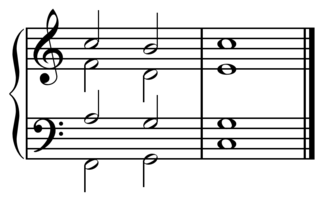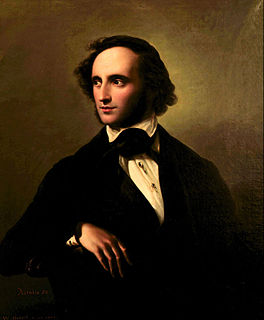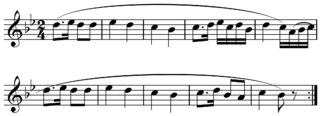
Georg Friedrich Bernhard Riemann was a German mathematician who made contributions to analysis, number theory, and differential geometry. In the field of real analysis, he is mostly known for the first rigorous formulation of the integral, the Riemann integral, and his work on Fourier series. His contributions to complex analysis include most notably the introduction of Riemann surfaces, breaking new ground in a natural, geometric treatment of complex analysis. His famous 1859 paper on the prime-counting function, containing the original statement of the Riemann hypothesis, is regarded as one of the most influential papers in analytic number theory. Through his pioneering contributions to differential geometry, Riemann laid the foundations of the mathematics of general relativity. He is considered by many to be one of the greatest mathematicians of all time.

Marinus (Rinus) van der Lubbe was a Dutch council communist tried, convicted and executed for setting fire to the German Reichstag building on 27 February 1933, an event known as the Reichstag fire.

Tonality is the arrangement of pitches and/or chords of a musical work in a hierarchy of perceived relations, stabilities, attractions and directionality. In this hierarchy, the single pitch or triadic chord with the greatest stability is called the tonic. The root of the tonic chord forms the name given to the key; so in the key of C major, the note C is both the tonic of the scale and the root of the tonic chord. Simple folk music songs often start and end with the tonic note. The most common use of the term "is to designate the arrangement of musical phenomena around a referential tonic in European music from about 1600 to about 1910". Contemporary classical music from 1910 to the 2000s may practice or avoid any sort of tonality—but harmony in almost all Western popular music remains tonal. Harmony in jazz includes many but not all tonal characteristics of the European common practice period, sometimes known as "classical music".

In music, a motif(pronunciation) (help·info) is a short musical phrase, a salient recurring figure, musical fragment or succession of notes that has some special importance in or is characteristic of a composition: "The motive is the smallest structural unit possessing thematic identity".
Generative grammar is a linguistic theory that regards grammar as a system of rules that generates exactly those combinations of words that form grammatical sentences in a given language. Noam Chomsky first used the term in relation to the theoretical linguistics of grammar that he developed in the late 1950s. Linguists who follow the generative approach have been called generativists. The generative school has focused on the study of syntax and addressed other aspects of a language's structure, including morphology and phonology.
Function, in music, is the term used to denote the relationship of a chord or a scale degree to a tonal centre. Two main theories of tonal functions exist today:
The Tristan chord is a chord made up of the notes F, B, D♯, and G♯:
In music theory, prolongation is the process in tonal music through which a pitch, interval, or consonant triad is able to govern spans of music when not physically sounding. It is a central principle in the music-analytic methodology of Schenkerian analysis, conceived by Austrian theorist Heinrich Schenker.

Irrlicht is the first album by Klaus Schulze. Originally released in 1972, in 2006 it was the sixteenth Schulze album reissued by Revisited Records as part of a series of Schulze album reissues. Recorded without a synthesizer, Irrlicht's set of "early organ drone experiments" is "not exactly the music for which KS got famous".

John Rutter's Gloria is a musical setting of parts of the Latin Gloria. He composed it in 1974 on a commission from Mel Olson, and conducted the premiere in Omaha, Nebraska. He structured the text in three movements and scored it for choir, brass, percussion and organ, with an alternative version for choir and orchestra. It was published in 1976 by Oxford University Press.
"Aedh Wishes for the Cloths of Heaven" is a poem by William Butler Yeats. It was published in 1899 in his third volume of poetry, The Wind Among the Reeds.

Martin Winter was a German rower who competed for East Germany in the 1980 Summer Olympics.

"Wie schön leuchtet der Morgenstern" is a hymn by Philipp Nicolai written in 1597 and first published in 1599. The hymn for Pentecost "O Heilger Geist, kehr bei uns ein" by Michael Schirmer is sung to the same tune.

Wolfgang Amadeus Mozart's Piano Sonata in F major, K. 547a is a sonata in two movements. It was originally published as an original sonata by Breitkopf and Härtel in 1799 but was soon found to be an amalgam of movements culled from other compositions. It is sometimes called Mozart's Piano Sonata No. 19.
Heinz Piontek was a German writer. In 1976, he was awarded the Georg Büchner Prize by the Deutsche Akademie für Sprache und Dichtung for his literary oeuvre with the words "einem Lyriker, der Farbe, Melos und Kontur zu vereinen weiß; einem Essayisten, der sich dem dichten und zugleich schwingenden Satz hingibt; einem Erzähler, der Zeit, Umwelt und Schicksal hereinzieht, ohne sich ihnen anders als in persönlich gefärbter Sprache und Gestalt zu unterwerfen". [To a lyricist who knows how to join colour, melody and contour; an essayist who is devoted to dense and likewise light sentences; a narrator who employs time, environment and fate without submitting to them other than by a personally tuned language and shape.

In music, a parallel chord is an auxiliary chord derived from one of the primary triads and sharing its function: subdominant parallel, dominant parallel, and tonic parallel. The term is derived from German theory and the writings of Hugo Riemann.
The substitution of the major sixth for the perfect fifth above in the major triad and below in the minor triad results in the parallel of a given triad. In C major thence arises an apparent A minor triad, D minor triad (Sp), and E minor triad (Dp).
Chorale is the name of several related musical forms originating in the music genre of the Lutheran chorale:

Jauchzet dem Herrn, alle Welt, WoO. 28, is an anthem for choir a cappella, a setting of Psalm 100 in German composed by Felix Mendelssohn in 1844. It was published in 1855 after the composer's death. It is the most popular setting of Psalm 100 by Mendelssohn, who also wrote a four-part motet as part of Three Motets, Op. 69, in 1847 for use in the Church of England, which adds a doxology to the psalm text. He set the psalm again, but with paraphrased text by Ambrosius Lobwasser, "Ihr Völker auf der Erde all", as part of Sieben Psalmen, harmonising melodies from the Genevan Psalter.
This page is based on this
Wikipedia article Text is available under the
CC BY-SA 4.0 license; additional terms may apply.
Images, videos and audio are available under their respective licenses.













